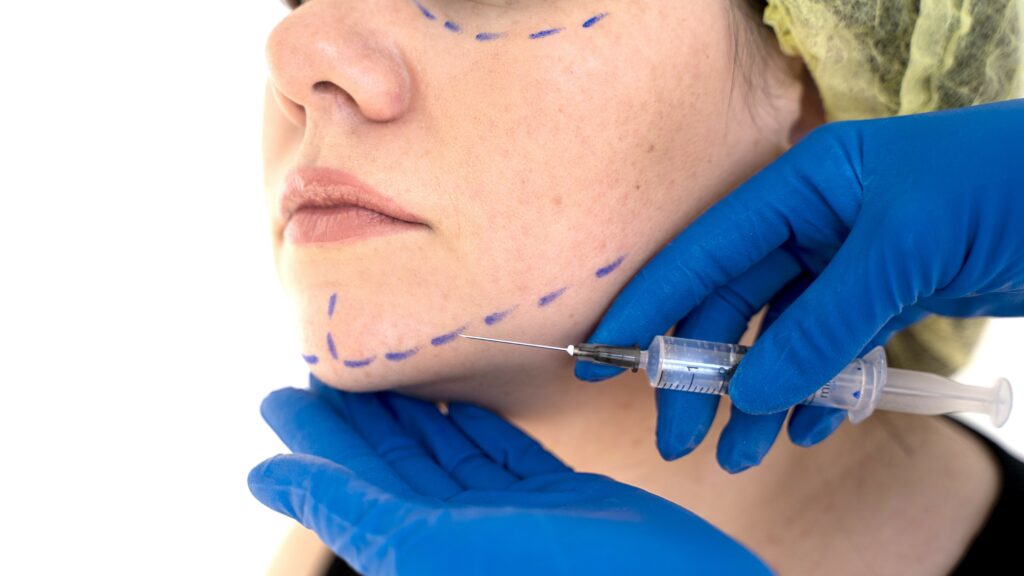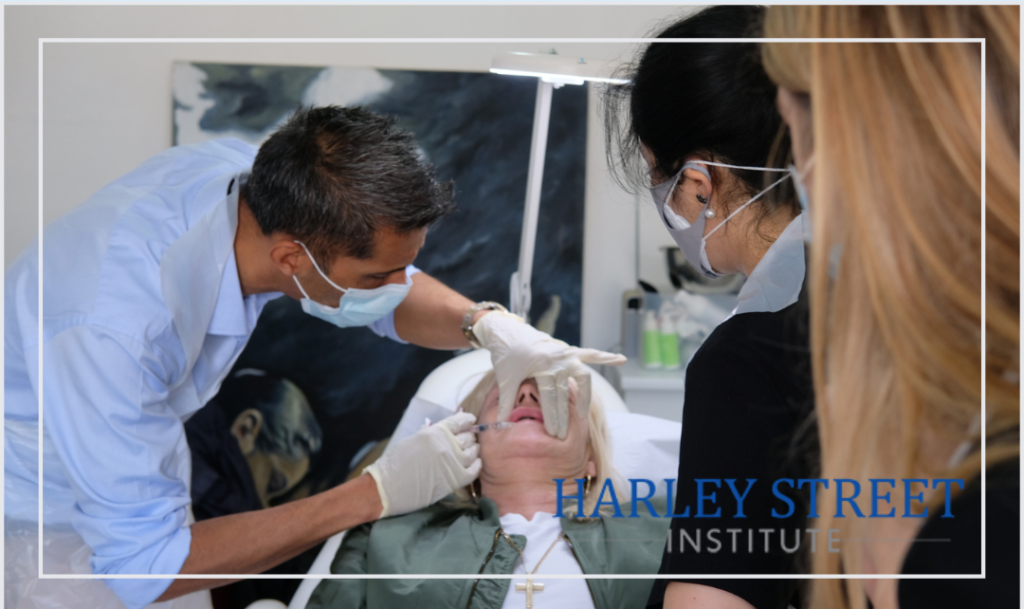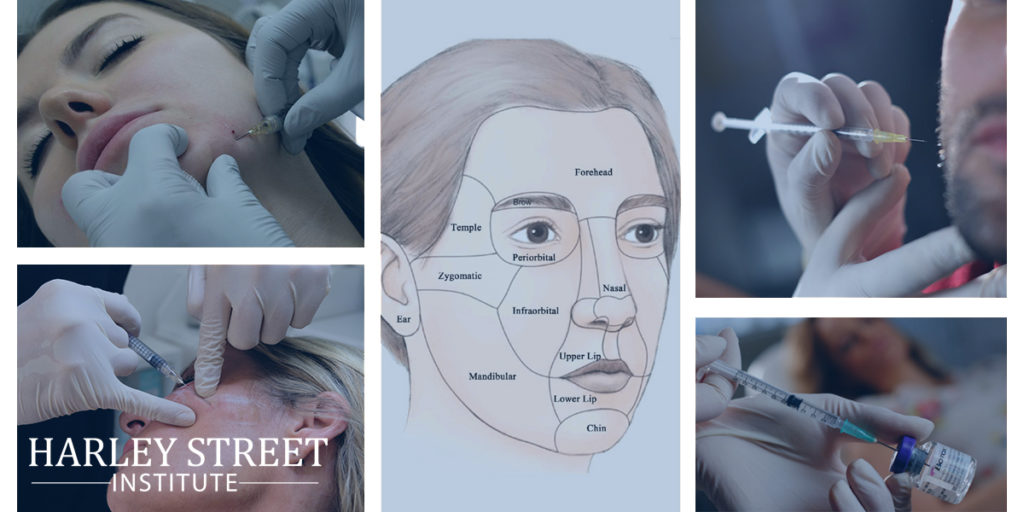-
Cosmedocs| Non Surgical
-
COSMESURG| Surgical
-
HARLEY STREET| Skin Care
FORMULATIONS -
| Skin Bar Clinic
 GLOW & GO
GLOW & GO
Understanding Types of Botulinum Toxin (Botox) for Precise Administration
Botox is a popular neurotoxin which is known for its use in anti-ageing treatments. It is derived from a Botulinum toxin which is one of the deadly poisonous toxins known to mankind. There are several different types of botulinum toxin that are available for use. The currently available most common types of Botulinum toxin in UK for commercial use are;
- Type A toxin that includes Botox (Vistabel) , Dysport (Azzalure) and Xeomin( Bocouture).
- Type B toxin that include Neurobloc.
Cosmetic practitioners or doctors are required to take specialized Botox courses in order to get expertise on injecting different types of Botulinum toxin for various indications as different Botulinum toxin acts in slightly different way on different muscles which will be discussed here.
Historical glimpse into discovery of Botulinum toxin
You may be surprised to know that the history of Botulinum that is currently known by the name of Botox stretch back to almost 2 hundred years. During 1822, there was a German doctor named Justinius Kerner, who suggested the use of botulinum toxin for treating excessive sweating or hyperhidrosis. Now, Botox is a known treatment for this condition.
During late 1960s, the use of Botox for treating squints started in the American clinics. Alan Scott was the pioneer of discovering the use of botox for eyes treatment. The major breakthrough after 20 years of this discovery was, when the Allergan, an American company manufacturing Botox, was given an approval for marketing Botox drug by FDA (Federal Drugs Agency). Allergan got the license to sell Botox across U.S. Since that time, Botox is a registered trademark and is available for use in more than 90 countries across the globe.
The various versions of Botox came into existence which is also available in UK. The variants of type A toxin include Azzalure, Bocouture, Dysport, Vistabel and Xeomin and type B variant include Neurobloc. Botox is now a licensed treatment in U.S. as well as in more than dozens of other countries around the globe for treating glabellar lines as well as wrinkles.
During March 2006, the new Botox brand name, Vistabel, was given a license in UK by Medicines and Healthcare products Regulatory Agency (MHRA) specifically for the treatment of glabellar lines while this licence was also given to Dysport which is available under the brand name of Azzalure in 2009 and Xeomin in 2010 with the brand name of Bocouture.
What exactly is Botulinum Toxin?
Botulinum Toxin is a type of protein which occurs in nature and it is produced by Clostridium Botulinum. This toxin produces many kinds of proteins which are rated into types A to F. These different types of proteins act on muscles of the body with varying degrees causing them to relax.
How different types of Botulinum toxin differ?
The different types of Botulinum toxin differ on the basis of their moclecular size, the degree to which they activate and the mechanism of their action. Different commercial Botulinum preparations possess different features with respect to their clinical performance.
How Botulinum toxin works?
Botulinum toxin works by blocking the signals from the brain to the muscles which are transmitted through nerve endings. It inhibits the signals from the nerve endings to reach the target muscle hence restricting the function of the underlying muscle. However, the effects are not permanent. They last for about 3-4 months.
As the muscle stops contracting for a period of time, the treated facial areas will give a smooth look with reduced wrinkles and lines but the untreated facial areas will not be affected and will function as normal.
Different types of Botulinum Toxins and their uses
As it has already been mentioned that different types of Botulinum toxin is available for commercial use in the market, these Type A and B toxin acts in slightly different way on various muscles. The most commonly used Btotulinum type in aesthetic practice is Type A toxin. Presently, in UK there are three major manufacturers of this toxin ; Merz, Gladerma and Allergan. These products are clinically tested and approved but there lies some differences which should be understood by the aesthetic doctors and should be taught about during the training and certification of botox courses.
Here these differences and uses will be mentioned for your knowledge.
- Botox/ Vistabel
Presently, beyond doubt Botox is the top most non-surgical cosmetic treatment available for wrinkles and fine lines. It is also the leading brand name of Botulinum A toxin as has been proven by the clinical trials and its practical use all across the world.
It is an approved treatment for the glabellar lines and crow’s feet in U.S. since 1980’s as well as in 12 other countries across the globe.
In U.K., Botox got the license in March 2006 available under the brand name of Vistabel. It is available in the form of vial dose which is particularly meant for treating glabellar lines. It has an identical formulation to that of Botox.
It has been licensed to treat following other indications in addition to glabellar lines and wrinkles, in UK.
- Blepharospasm
- Cervical dystonia
- Hemifacial spasm
- Auxiliary hyperhidrosis
- Dynamic equinus foot deformity due to spasticity in ambulant paediatric cerebral palsy patients who are of 2 years or older
- For treating wrist and hand disability due to upper limb spasticity due to stroke in adults.
- Dysport/Azzalure
Dysport is a Botulinum Toxin Type A that is produced by a French company named Ipsen. Since 1990s, it has been in use in U.K. It also has also been licensed in 67 other countries including UK, Germany and the European countries.
In 2009, it was given approval for aesthetic use in UK market under the brand name of Azzalure specifically for the treatment of glabellar lines. It is marketed by Gladerma.
Dysport/Azzalure is licensed treatment in UK for different indications that include;
- Blepharospasm
- Hemifacial spasm
- Cervical dystonia
- Dynamic equinus foot deformity caused by spasticity in ambulant paediatric cerebral palsy patients of age 2 years or older.
- Focal spasticity, including the treatment of arm symptoms that are related with focal spasticity in association with physiotherapy.
It also has an off-label cosmetic use.
- Bocouture/Xeomin
Xeomin was launched in UK in 2008. It claims to be the most innovative type of Botulinum Toxin A due to its formulation. In this type, an extensive purification system has been used for the removal of complexing proteins from the Botulinum toxin. As compared to the other A type toxins, Xeomin comprise of pure 150 kD neurotoxin. It has been licensed for the treatment of blepharospasm and cervical dystonia in UK as well as for cosmetic use since 2010 under the brand name of Bocouture.
It is widely believed that the immune reaction is promoted by the bacterial protein found in other products that results in a loss of their effect and the reduction in their activity duration. Clinical studies conducted on Bocouture exhibit that it has the lowest protein content as compared to all other types of Botulinum toxins. These studies also show that even after the repeated injections of high doses of Bocouture, does not promote the production of neutrilising anti-bodies.
This implies that Bocouture produce similar results to that of other types of Botulinum products without any risk of formation of anti-bodies which results in giving long lasting effects.
The main difference between Botox, Dysport ad Xeomin
The main difference between the three is their formulation which affects the usage of their doses, the spread of the products and the duration of results. A comparative study conducted on the content of Botulinum toxin found in Botox®/Vistabel®, Dysport®/Azzalure®, and Xeomin®/Bocouture® showed that Xeomin had the highest neurotoxin activity, then the Dysport followed by Botox which has the lowest specific activity level (Frevert, J. Content of botulinum neurotoxin in Botox®/Vistabel®, Dysport®/Azzalure®, and Xeomin®/Bocouture®. Drugs R D. 2010;10(2):67-73.)
For instance, Botox is formulated by using an accompanying protein while Dysport has less amount of same protein whereas Xeomin does not have any accompanying protein. Which one will prove suitable for the particular condition depends on the specific goals to be achieved as well as on the recommendations and expertise of cosmetic practitioner.
How important is Botulinum treatment training for performing Botulinum treatments?
Due to an increasing and wide spread popularity of Botulinum toxin, it is now available in extensive variety of setting as well as offered by wide range of professionals including dermatologists, cosmetic doctors, nurses, plastic surgeons, general medical practitioners, medical spas and dentists who have undergone some botox training courses.
You will find even beauticians, beauty experts and therapists offering the Botox treatment who may not have undertaken any Botox courses and they are not even allowed by law to perform the treatment as it is Prescription Only Drug.
Keeping in view different types of Botulinum toxins available for treating different conditions at different levels and variations in their doses and effects, it is essential that the practitioners should get the Botox course training in performing and using various Botulinum toxins. They should be aware of how much quantities of Botulinum toxin type will be enough to induce the underlying and desired changes. A little mistake or carelessness in performing the botulinum treatment can lead to temporary muscle paralysis and other side effects depending on the injected area. Complete background knowledge about the Botulinum Toxin type A and B is necessary to know about their effects. Therefore, it is essential that the Botox courses should taught practitioners about the variations in the doses and effects of Botulinum types for achievement of positive and effective results.
Lesley Fraser
Related Posts
We use cookies to give you the most relevant experience, Cookie Policy.
See What Our Fellows Have Been Up to Recently
Historically, aspirating before administering certain injections, especially intramuscular ones, was standard practice. The main reason for aspiration was to avoid injecting medication directly into the bloodstream, which could cause adverse reactions or reduce the effectiveness of the medication.
However, the necessity and relevance of this practice have been debated in recent years. Some recent guidelines and studies suggest that aspiration may not be necessary for all types of injections. For example, it’s generally agreed that aspiration is not required for subcutaneous injections because there are fewer large blood vessels in the subcutaneous tissue that could be accidentally punctured. For intramuscular injections, the necessity of aspiration might depend on the injection site. For instance, aspiration is still recommended by some for injections in areas where large blood vessels are present, but it might be considered unnecessary for other sites.
The shift in practice is partly due to a better understanding of anatomy and the low risk of injecting into a blood vessel in certain areas, along with a desire to streamline the injection process and reduce patient discomfort. However, opinions and practices vary, with some healthcare professionals continuing to advocate for aspiration as a precautionary measure, while others view it as an unnecessary step for most injections.
#aestheticmedicine #dermalfiller #aceconference

Understanding depth, volume, and pressure can enhance a practitioner’s skill set, enabling them to provide more valuable services to their clients using their existing tools. #aestheticmedicine #dermalfillertraining #wrinklefree

Mastering hand stability isn’t magic, it’s a mix of experience & targeted learning 🎯 Our students get ahead with specialized techniques, paving the way for precise injections! 💉#SkillDevelopment #FutureHealthPros
.
.
.
.
.
#dermalfillertraining #aestheticmedicine #botoxtraining

Virtually any area can be reached using a cannula #fillertraining #aestheticmedicine #hsifellowprogram

“Unlock Your Aesthetic Potential with Harley Street Institute’s Fellowship! 🌟 Elevate your skills in aesthetic medicine through our intensive hands-on training in Botox and Dermal Fillers. Get ready to sculpt beauty, one injection at a time! 💉✨ Join us for a transformative learning journey that takes you beyond the classroom and into real-world expertise. Are you ready to master the art of enhancing natural beauty? 💫 #HarleyStreetFellowship #AestheticMedicineMastery #SculptingBeauty”

Link in bio
"Unlocking the Secrets of Masseter Botox: Empowering smiles, one injection at a time! 💉💪 Join me on an exciting journey as we delve into the world of Masseter Botox. Learn the art and science behind this transformative procedure, and discover how it can redefine facial aesthetics. Don`t miss out on this opportunity to enhance your skills and expand your practice. Let`s reshape faces and build confidence together!
Link in bio.
#MasseterBotoxCourse #FacialAesthetics #TransformativeProcedures #SmileEnhancement #ContinuingEducation
#aestheticmedicine

💭Have You Ever thought :
👉🏼What lies beneath the orbicularis oculi ?
👉🏼Why do I need to have the correct depth ?
👉🏼How to avoid an asymmetric smile, periorbital edema or a shelf like look at the lid/cheek junction ?
⚠️We all know that when treating crows feet, we are administering botox into the orbicularis oculi, and that there are complications but which and how?
‼️Too inferior or deep🟰 an asymmetric smile
(you’ve hit the zygomaticus minor muscle and major if you’re really too inferior!)
‼️Too medially 🟰 periorbital edema
(and you’re the periorbital region )
Located just underneath the skin, the orbicularis oculi has multiple origin and insertion points. A paired muscle, that overlies the periorbital region in a circular manner.
⚠️The wrong location, the wrong depth can result you injecting botox into a completely different muscle.

Welcome to the under eye region, an area of the face that can often show signs of aging such as wrinkles, hollows, and dark circles. Today, I want to share with you how fillers can be used to address these concerns by injecting them into different layers of the skin.
Using a needle, we can inject fillers into the dermis layer of the skin to improve the appearance of fine lines and wrinkles. This can help to smooth out the texture of the skin and create a more youthful and refreshed look. However, it’s important to note that injecting fillers into this layer requires specialized training and experience to ensure safe and effective results.
In addition to the dermis layer, fillers can also be injected into the bone to help address deeper hollows and shadows under the eyes. This technique requires a higher level of expertise as it involves precise placement of the filler to achieve the desired outcome.
Lastly, fillers can be injected into the fat compartment of the under eye region using a cannula. This method can help to add volume and smooth out any irregularities in the fat pads under the eyes. Again, specialized training and experience are crucial for safe and effective results.
Overall, the use of fillers in the under eye region can provide a non-surgical solution to address signs of aging and enhance the appearance of the face. However, it’s important to seek out a qualified and experienced provider who has received proper training in the use of fillers in this delicate area.
If you’re interested in learning more about how fillers can benefit you, please don’t hesitate to reach out and schedule a consultation. Let’s work together to help you achieve your aesthetic goals!
#cosmedocs #harleystreetinstitute
.
.
.
.
#lifestyleblogger
#selfcarematters #aestheticmedicine
#beautytips
#skincarecommunity
#antiagingtips
#makeuptutorials
#selfcarelove
#aestheticbeauty
#lifestyleinspo #lifestyleblogger
#selfcarematters #dermalfillertraining
#beautytips
#skincarecommunity
#antiagingtips
#makeuptutorials
#selfcarelove #dermalfillers
#aestheticbeauty
#lifestyleinspo
#antiagingsecrets
#harleystreet #drahmedhaq #oxforduniversity
#harleystreetinstitute

The mentalis muscle is a facial muscle located in the chin area. It originates from the mandible and extends downward to the skin of the chin. The primary function of the mentalis muscle is to control the movement and position of the lower lip and the skin of the chin. It plays an important role in activities such as speaking, smiling, and pouting.
In addition to its role in facial expression, the mentalis muscle also helps to maintain the position of the lower front teeth and the shape of the lower lip. Dysfunction or hyperactivity of the mentalis muscle can lead to the development of chin wrinkles, which are vertical lines that appear on the skin of the chin. Understanding the anatomy and function of the mentalis muscle is important for healthcare providers when performing aesthetic procedures in the chin area.
Online Course With Video Demo
www.harleystreetinstitute.com
#botoxtraining #mentalistreatment

#Repost @dranabilamzavala with many thanks 🙏 and best wishes for the future.
Esta semana tuve la oportunidad de estar en Londres en una de las mejores clínicas con los mejores equipos de Medicina Estética en el mundo, perfeccionado técnicas de Rinomodelación con el Dr.Ahmed Haq.
——
@drahmedhaq You are simply incredible, thanks for the hands on and all the new techniques you shared. @drahmedhaq @harleystreetinstitute @cosmedocs
.
.
.
#aestheticmedicine #dermalfillertraining #nosejob #medicaltraining #plab #harleystreet #10harleystreet #aesthetics

Huge Congratulations to Mariana, on completing her foundation course in Aesthetics Medicine with us here at Harley Street Institute. 🥇✨
This combined course covers the necessities required for daily clinic practise, whether starting out or refreshing skills. Our small group training (4:1) provide unparalleled mentorship at any of our training days.
#cosmetictraining #aesthetics #hsi #cosmetics #cosmedocs #harleystreetcourses #foundationcourse #london

Only courses with true mentorship. #botoxtraining #dermalfillertraining #aestheticmedicine #hsifellowprogram #harleystreetfellowship

Huge congratulations to @onemedicalclinic for completing her Fellowship in aesthetic Medicine with us at Harley Street Institute 💫💫✨ We are so proud of having you 🥰
#Repost
Dr Crystal:”When I completed medical school 13 years ago, one of my cherished mentors gave me advice that has stayed with me for life - “never stop learning; it makes the difference between being good and being great."
From my years of Ophthalmic-surgical training to becoming a student of Public Health to my experience as a legislator in Parliament to operating my own
Medical and Aesthetic Medical practice, the lessons learned have been varied and valuable. 🤓
On this occasion my commitment to lifelong learning led me to Harley Street, London. I didn’t just want to be a good injector, I needed to be a great one so I needed to go where the great injectors were. 💉
Every day for the last two months I was immersed in one-on-one intensive training with the aim of mastering my injectable skills and thanks to the incredible team of doctors and trainers at @cosmedocs
@harleystreetinstitute l am proud to say Mission Accomplished! “

Huge Congratulations to Dale Rae for completing the Certificate in Aesthetic Medicine training program. 💫💫
💉The 3-day Aesthetic Medicine Certificate is tailored towards new practitioners who are ready to kick-start their career in Aesthetic Medicine. It aims to provide an in-depth understanding of the Layers of the Skin and Biological Ageing Process. The package also includes our most popular Foundation Botulinum Toxin and Dermal Fillers course, including an introduction to using cannula.
💉It is an Intense 3-day course incorporating essentials basic and advanced botox and dermal filler procedures combined with popular skin treatments perfect for the beginner all-rounded aesthetic practitioner.
You will be provided direct mentorship by our various cosmetic practitioners who are experts in performing their respective aesthetic treatments.
💉Small group training under the direct supervision of our experienced aesthetic trainers. Master procedures to an advanced level. Learn theory, consultation methods and manage client expectations as well as complications.
🙌 DM for more details. #aesthetic #dermalfillers #detmalfillertraining

Aesthetic medicine is an art. It`s not enough to know facial anatomy or to be a good injector. The best aesthetic doctor has an artistic eye. Sometimes this is a skill that can be developed over years. Being able to assess a fa ce within seconds of walking into a room. Knowing exactly how injectables can be used for subtle and natural results.
The end result should not be obvious to an untrained eye.
It`s such a shame to see overfilled faces exaggerating proportions. When really, the main aims are to restore volume lost or correct natural imbalances.
#aestheticmedicine #dermalfillers #beauty
Repost @cosmedocs

Huge Congratulations to @erikatydermatology for completing her Fellowship in Aesthetic Medicine with us at the Harley Street Institute 💫💫💫
Our Aesthetic Fellowship is the pinnacle of training for those seriously interested in escalating their careers.
.
Our fellows are taken on board within clinic over 3 months with weekend workshops, 1-1 mentoring, treatment log book and clinical assistance.
.
Following on from this they have the opportunity to have Independent Fellow Clinics to improve their confidence with patient consultation and individual treatment planning.
.
We believe that this is the future of aesthetic traning to ensure that practitioners have captured all the essential skills for successful careers.
.
We have been extremely proud of our old fellows, many who have moved on to now work with some of the most prestigious clinics in London.
.
Next enrolment periods: TBC
.
To find out more information or to apply, please email your CV to [email protected]
.
#thefellowship #harleystreetinstitute #doctorsanddentists


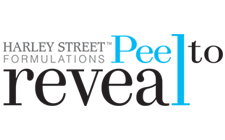
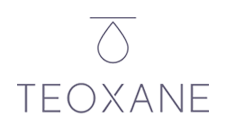





Note: if you did not get the email, please check spam/junk folder

